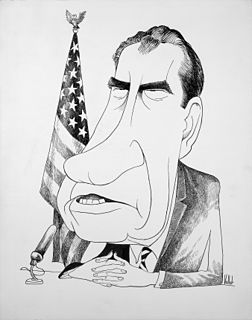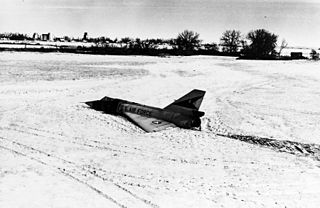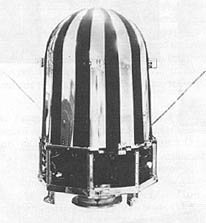 W
WEvents from the year 1970 in the United States.
 W
WIn United States federal agriculture legislation, the Agricultural Act of 1970 initiated a significant change in commodity support policy.
 W
WThe Bank Secrecy Act of 1970 (BSA), also known as the Currency and Foreign Transactions Reporting Act, is a U.S. law requiring financial institutions in the United States to assist U.S. government agencies in detecting and preventing money laundering. Specifically, the act requires financial institutions to keep records of cash purchases of negotiable instruments, file reports if the daily aggregate exceeds $10,000, and report suspicious activity that may signify money laundering, tax evasion, or other criminal activities.
 W
WThe United States Census of 1970, conducted by the Census Bureau, determined the resident population of the United States to be 203,392,031, an increase of 13.4 percent over the 179,323,175 persons enumerated during the 1960 Census. This was the first census since 1800 in which New York was not the most populous state – California overtook it in population in November 1962. This was also the first census in which all states recorded a population of over 300,000, and the first in which a city in the geographic South recorded a population of over 1 million (Houston).
 W
WThe Clean Air Act of 1963 is a United States federal law designed to control air pollution on a national level. It is one of the United States' first and most influential modern environmental laws, and one of the most comprehensive air quality laws in the world. As with many other major U.S. federal environmental statutes, it is administered by the U.S. Environmental Protection Agency (EPA), in coordination with state, local, and tribal governments. Its implementing regulations are codified at 40 C.F.R. Sub-chapter C, Parts 50–97.
 W
WThe "Cornfield Bomber" is the nickname given to a Convair F-106 Delta Dart, operated by the 71st Fighter-Interceptor Squadron of the United States Air Force. In 1970, during a training exercise, it made an unpiloted landing in a farmer's field in Montana, suffering only minor damage, after the pilot had ejected from the aircraft. The aircraft, recovered and repaired, was returned to service, and is currently on display at the National Museum of the United States Air Force.
 W
WThe United States Census of 1970, conducted by the Census Bureau, determined the resident population of the United States to be 203,392,031, an increase of 13.4 percent over the 179,323,175 persons enumerated during the 1960 Census. This was the first census since 1800 in which New York was not the most populous state – California overtook it in population in November 1962. This was also the first census in which all states recorded a population of over 300,000, and the first in which a city in the geographic South recorded a population of over 1 million (Houston).
 W
WMiss America 1971, the 44th Miss America pageant, was held at the Boardwalk Hall in Atlantic City, New Jersey on September 12, 1970. The Women's Liberation Front demonstrated at the event and Miss Iowa 1970, Cheryl Browne, was the first African American contestant in the history of the Miss America pageant. Miss South Dakota 1970 Mary Harum and Miss New Jersey 1970 Hela Yungst would both become media personalities.
 W
WThe United States's Mandrel nuclear test series was a group of 52 nuclear tests conducted in 1969–1970. These tests followed the Operation Bowline series and preceded the Operation Emery series.
 W
WThe Orbiting Frog Otolith (OFO) was a NASA space program which sent two bullfrogs into orbit on 9 November 1970 for the study of weightlessness. The name, derived through common use, was a functional description of the biological experiment carried by the satellite. Otolith referred to the frog's inner ear balance mechanism.
 W
WThe Public Health Cigarette Smoking Act is a 1970 federal law in the United States designed to limit the practice of smoking. As approved by the United States Congress, the act required a stronger health warning on cigarette packages, saying "Warning: The Surgeon General Has Determined that Cigarette Smoking Is Dangerous to Your Health". It also banned cigarette advertisements on American radio and television.
 W
WThe student strike of 1970 was a massive protest across the United States, that included walk-outs from college and high school classrooms initially in response to the United States expansion of the Vietnam War into Cambodia. The strike began May 1, but increased significantly after the shooting of students at Kent State University by National Guardsmen on May 4. While many violent incidents occurred during the protests, they were, for the most part, peaceful.
 W
WThe following is a timeline of the Presidency of Richard Nixon from January 1, 1970, to December 31, 1970.
 W
WThe U.S. postal strike of 1970 was an eight-day strike by federal postal workers in March 1970. The strike began in New York City and spread to some other cities in the following two weeks. This strike against the federal government, regarded as illegal, was the largest wildcat strike in U.S. history.
 W
WThe Women's Strike for Equality was a strike which took place in the United States on August 26, 1970. It celebrated the 50th anniversary of the passing of the Nineteenth Amendment, which effectively gave American women the right to vote. The rally was sponsored by the National Organization for Women (NOW). About 50,000 women gathered for the protest in New York City and even more throughout the country. At this time, the gathering was the largest on behalf of women in the United States. The strike, spearheaded by Betty Friedan, self-stated three primary goals: free abortion on demand, equal opportunity in the workforce, and free childcare. The strike also advocated for other second wave feminist goals more generally, such as political rights for women, and social equality in relationships such as marriage.